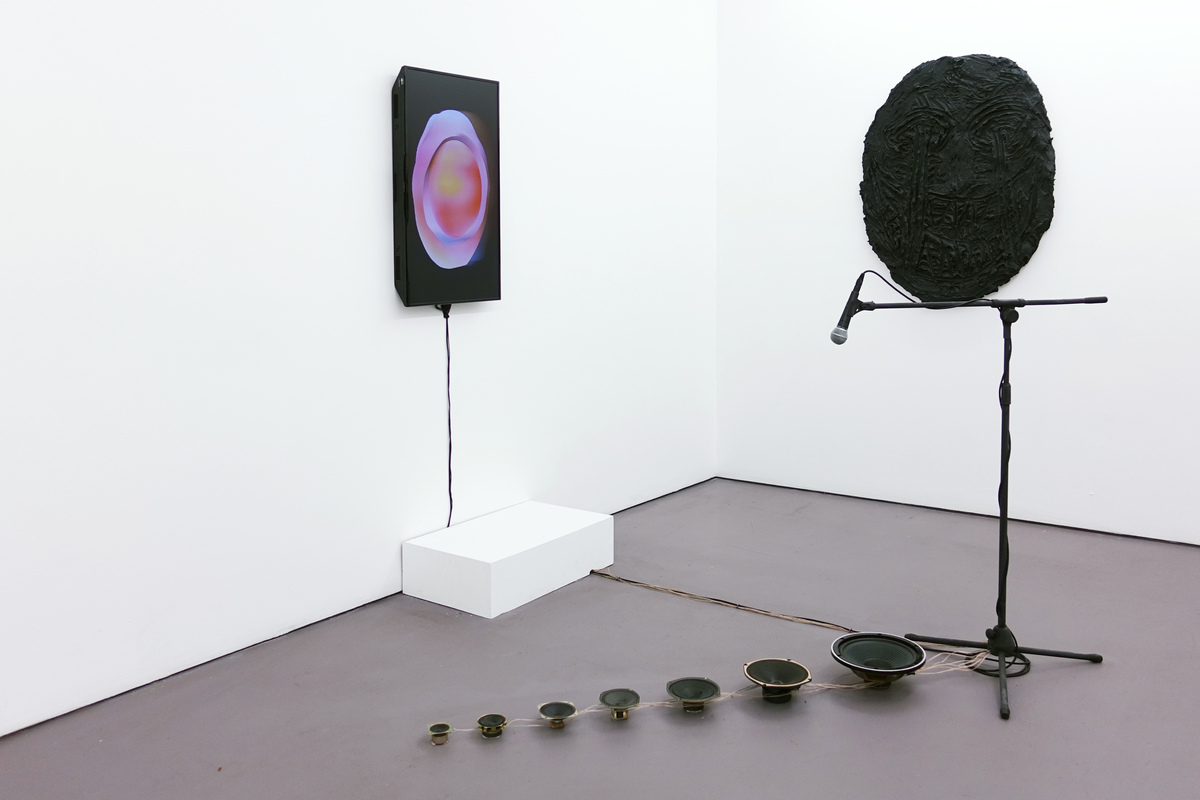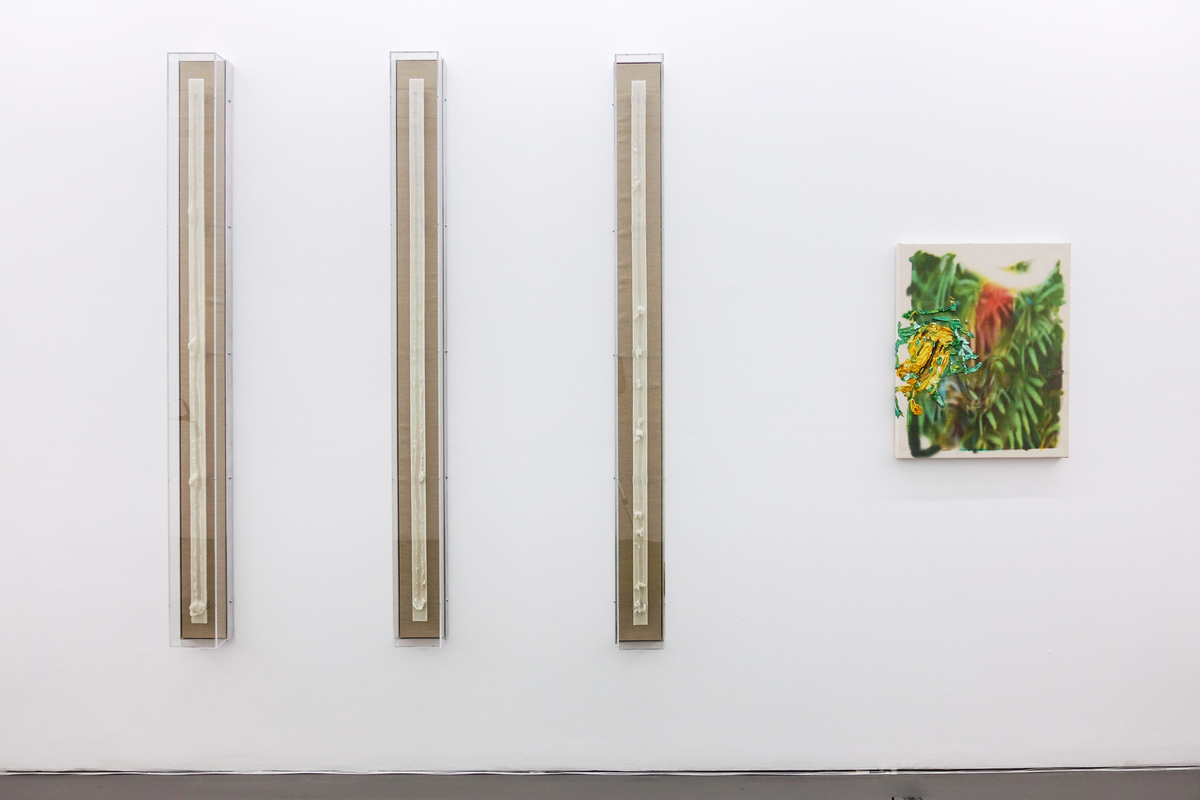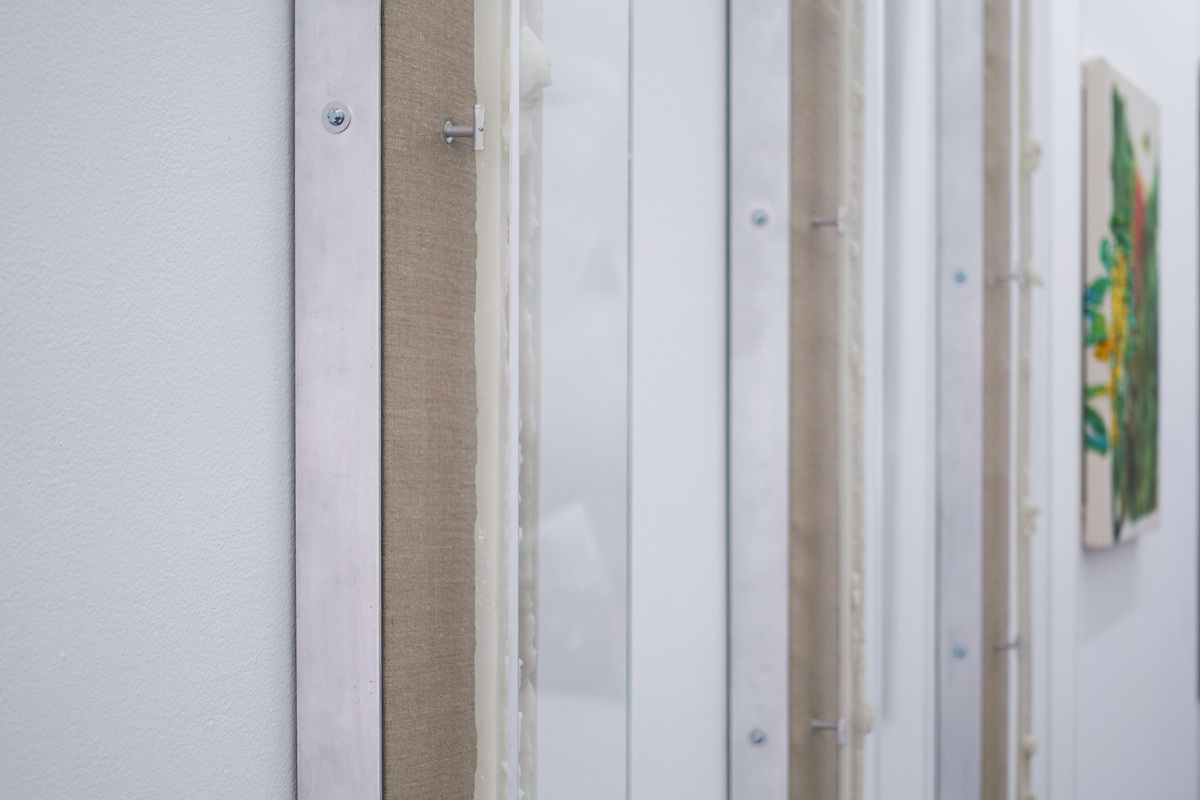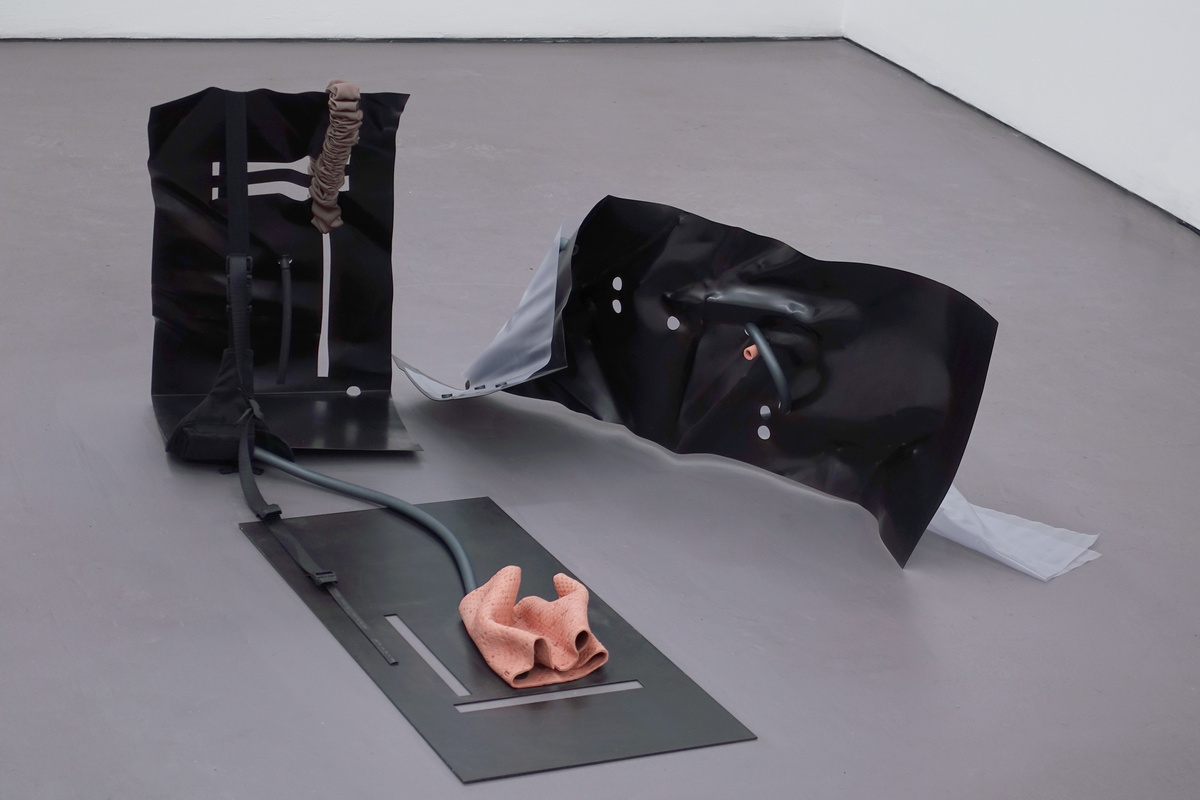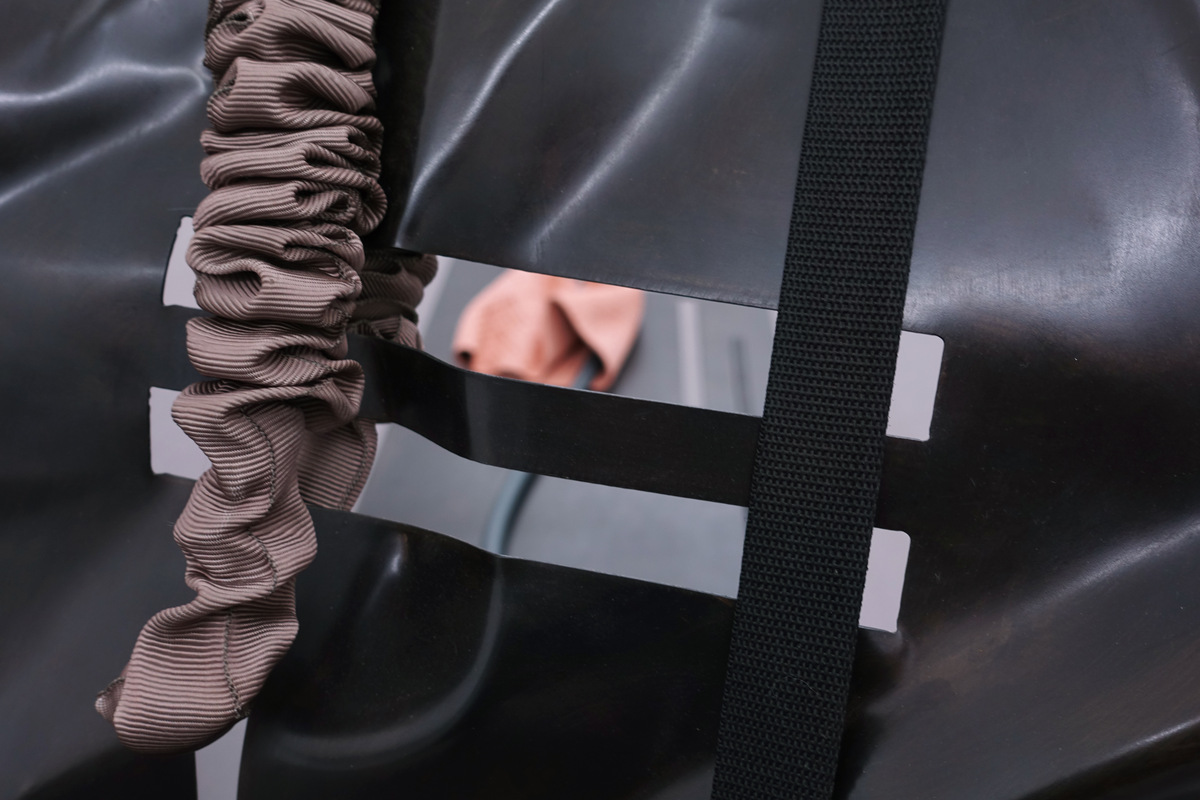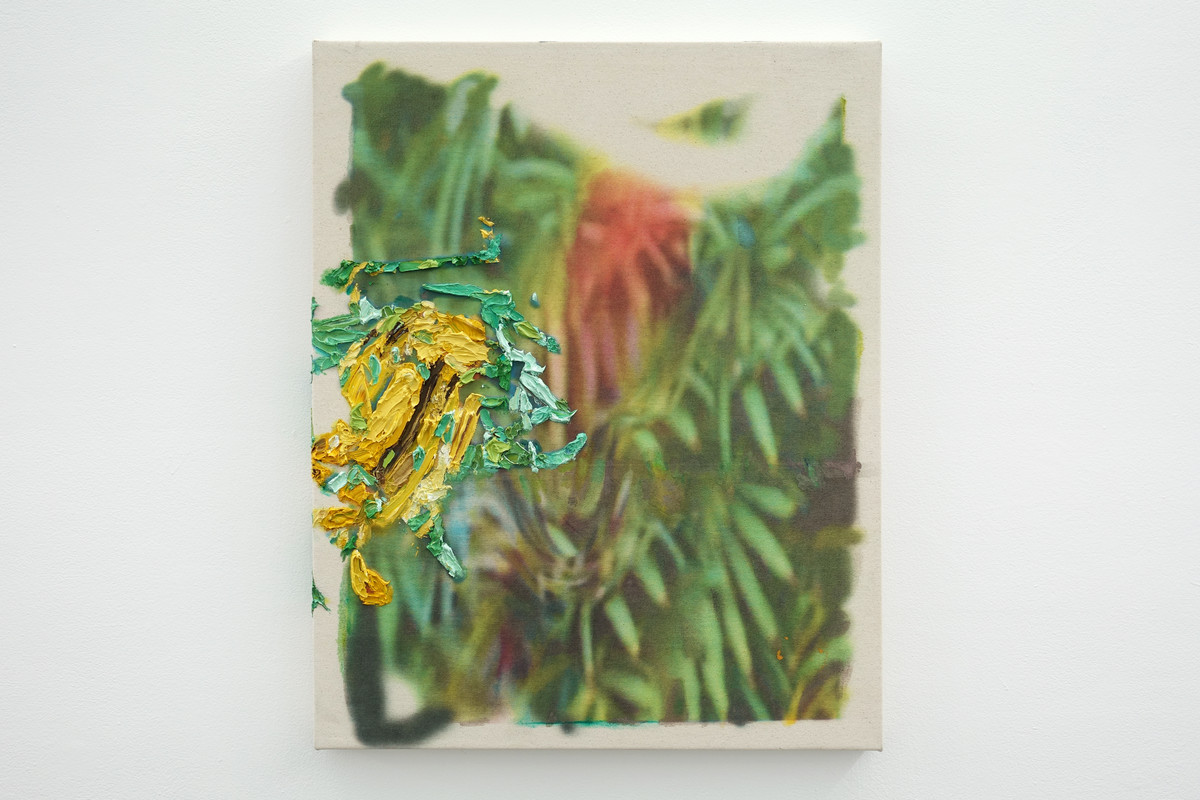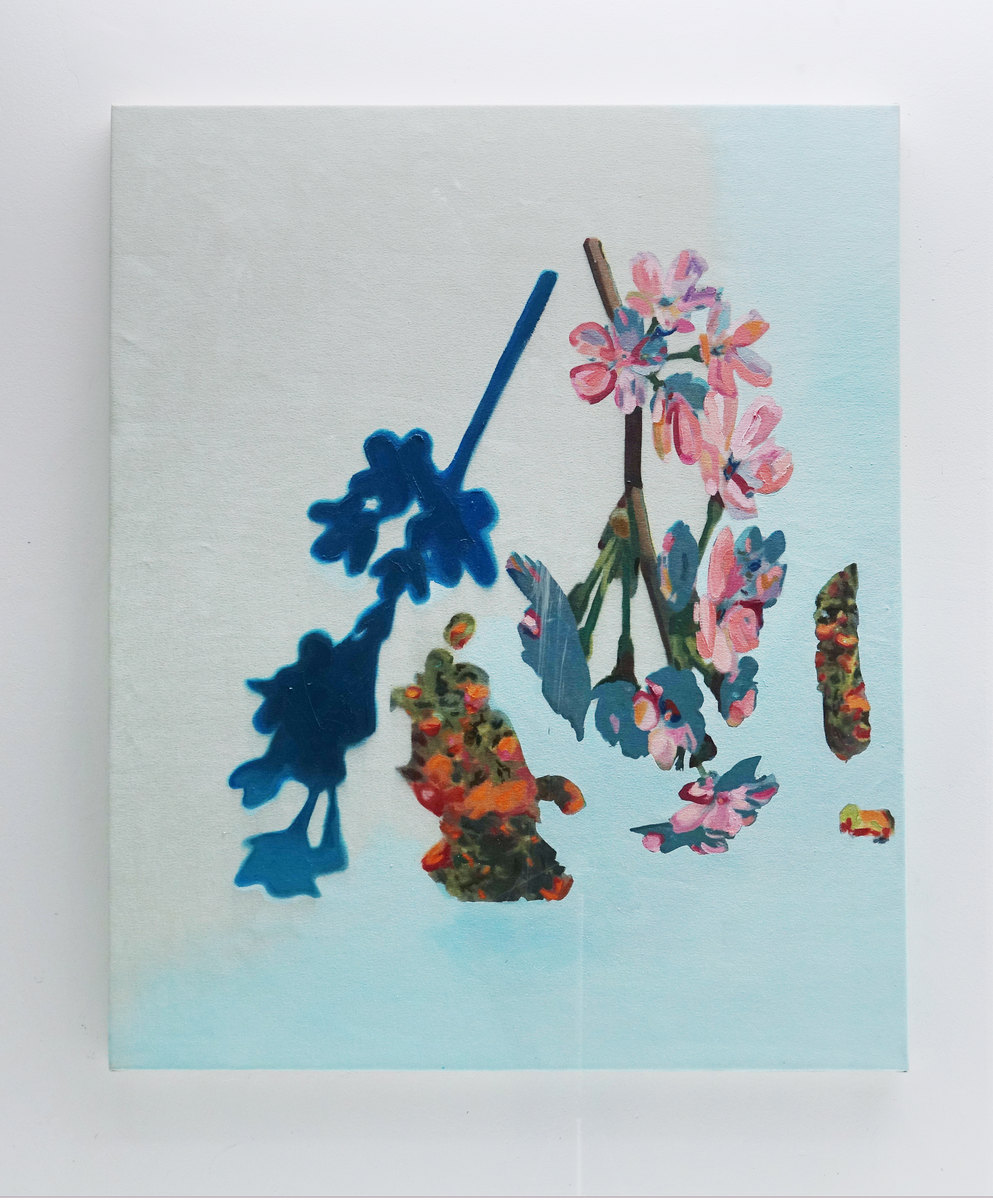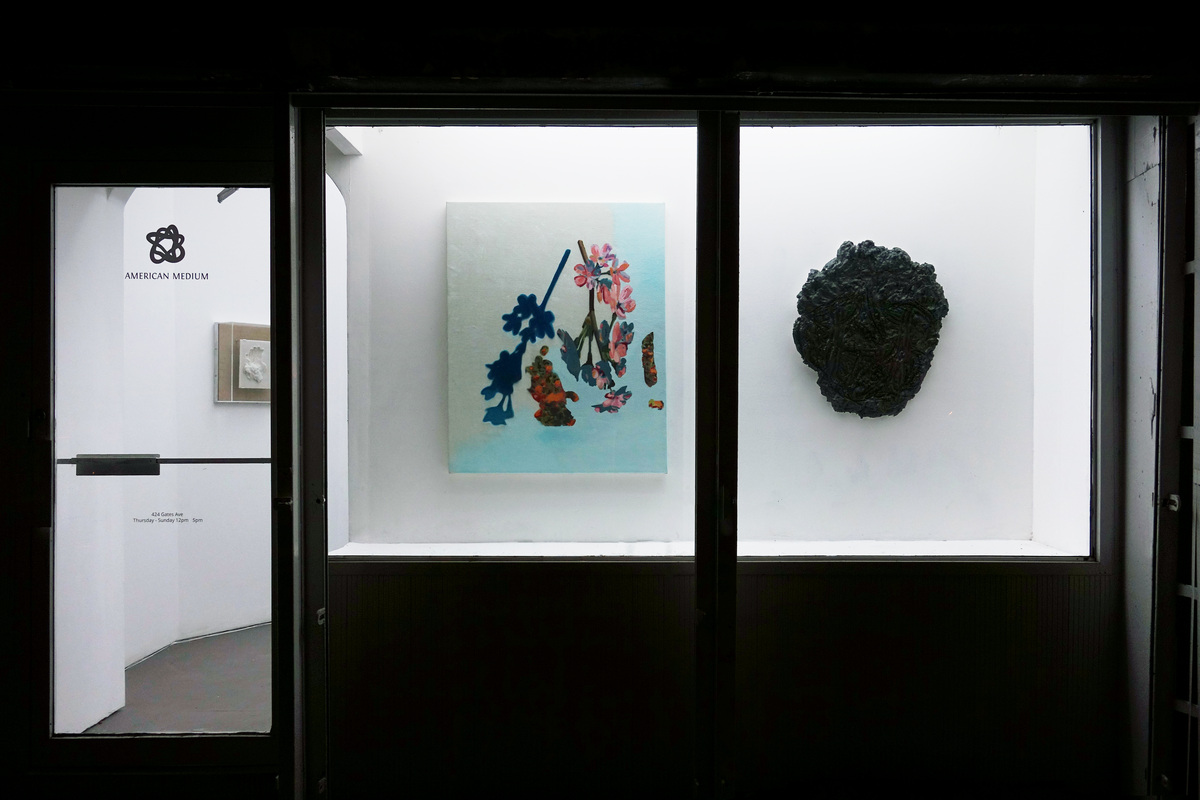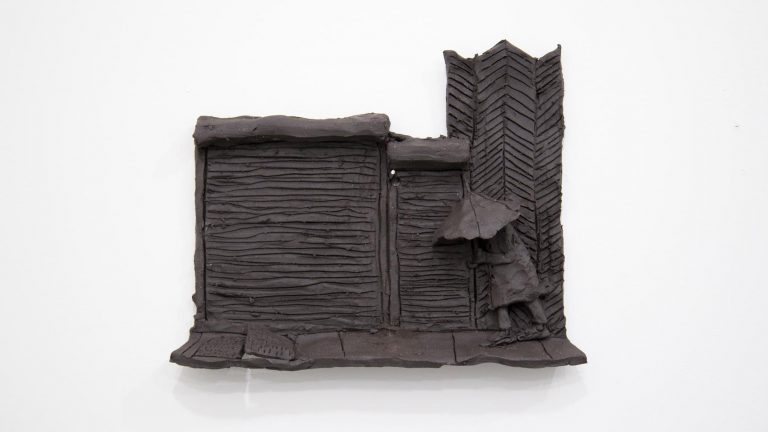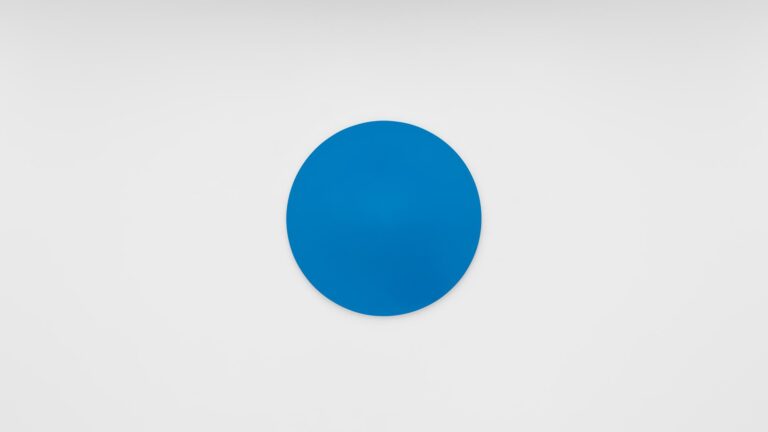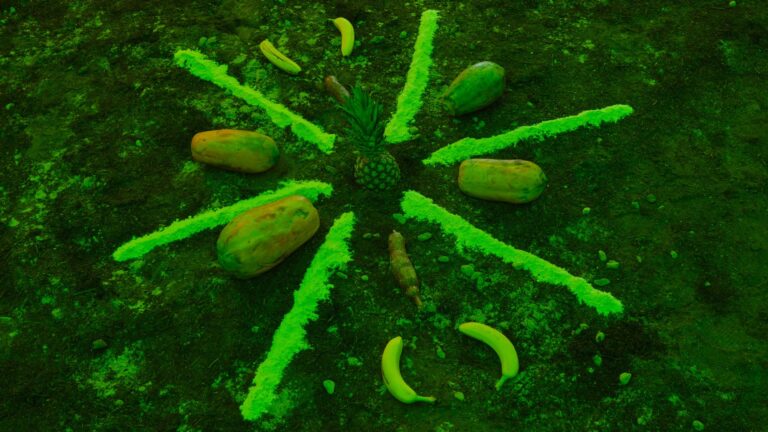Artists: Daniel G. Baird, Alisa Baremboym, Adam Basanta, Jordan Kasey, Sara Ludy, Paul Remund & Brian Wallace, Rachel Rossin, Jacolby Satterwhite, Chloe Seibert
Exhibition title: Real Things About Real Things
Venue: American Medium, New York, US
Date: December 12, 2015 – January 24, 2016
Photography: images copyright and courtesy of the artists and American Medium, New York
I am a character enmeshed within swirling vortices of space-time. I am a character aware of myself as a shadow, sensing the stranger who portrays me. I was comfortable as a shadow. I felt emboldened as my lesser dimensional self, assured in the power of my actions and secure within linear time, before knowledge of my actor. Our lovely masque is crystalized and made molten.
Opera, gesamtkunstwerk or “total art,” is the integration of all modes of human creativity—an experience that engages all of our senses and replaces one’s own narrative with one carefully crafted. Real Things About Real Things presents a similar experience, one relevant to our present moment, which philosopher Timothy Morton refers to as the “time of Hyperobjects”, or a time when “…the more we know about the interconnection, the more it becomes impossible to posit some entity beyond or behind the interrelated beings.”
In keeping with Morton’s ideas, the works in Real Things About Real Things speak directly to a reality that exists without foreground or background—a reality where all things are deeply entangled and are constantly both acting and being acted upon. Morton writes, “We have no world because the objects that functioned as invisible scenery have dissolved.” How can one maintain a sense of agency upon recognizing that separation from our environment is an illusion? What ethical and moral dilemma do living without a world pose? Does this knowledge enable transcendence, or threaten to deliver a break from reality?
Jordan Kasey’s paintings depict beings whose essences bear an uncanny connection to both the painted environment and the canvas itself. The figures relate to their environment through shared physical qualities—their colors and textures akin to stone, crystal or viscous liquids. The anthropomorphic qualities of these non-human entities also subvert the traditional figure-ground relationship in painting, as the subject cannot easily be distinguished from its environment.
Combining infrared scanning technology, 3D modeling, and observational painting, Rachel Rossin’s work similarly depicts the interconnected nature of things and the environment, or more specifically, a sensuous relationship with the virtual environment she creates. Though working within the tradition of observational painting, which ordinarily presents a clear distinction between subject and object, Rossin instead demonstrates a sincere communion between the human and non-human by depicting the ways in which natural forms and abstractions are both distorted by, and fused with, the space of the painting.
Alisa Baremboym’s work also explores our relationship with the non-human. Composed of mangled steel, mineral-based gel, vinyl tubing and ceramic, Baremboym’s sculptures evoke a dystopic future using anachronistic materials. Ceramic is possibly the oldest sculptural material in human history. Steel is the most recycled material on earth. Petroleum is synthesized from the remains of beings that lived millions of years ago. Through her use of these materials, Baremboym collapses human and non-human timescales, calling attention to anthropocentric thinking that has given rise to capitalist modes of production and consumption, which have incredible sway (and often deleterious effects) over how we define ourselves. These sculptures, while decidedly alluring, also display a morbid dependency on the notion that all things are raw materials to be exploited by a capitalist machine.
At once records of the past and emblems of the future, Daniel G. Baird’s uncanny artifacts display the timescales of humanity through seemingly simple gestures. Upon closer inspection of Baird’s piece Strata, what appears to be a mark made in “a pure surface” is actually a translation of a mark via a 3D-scan, digitally manipulated and cast in marble dust. This material translation relies on contemporary technology to confuse the timeline of the work’s production. As Timothy Morton describes, “What is called the present is simply a reification, an arbitrary boundary drawn around things by a particular entity – a state, philosophical view, government, family, electron, black hole. Time is not a series of now points…but rather a sickening surge, like crosstown traffic, or an ocean with many currents; or ‘a river without banks,’ like the title of a painting by Marc Chagall.”
Both Daniel G. Baird and Chloe Seibert’s sculptures grasp at what we consider essentially human. In contrast with Baird’s work, which situates itself as an artifact across time, Seibert’s reliefs are records of the artist’s emphatically present psychic condition at specific moments, externalized through rubberized plaster. Though the dark shapes could be perceived as holes in the gallery wall, or cartoon-like portals, in reality the sculptures do not express a void, but rather a dense physicality and strong emotive power.
Sara Ludy creates beautiful and meditative abstract animations using multiple imaging programs and computer algorithms to create fields of acidic color that mimic natural motion, revealing and obscuring one another with infinite complexity. As new code is developed to simulate natural phenomena, the previously unseen forces that underlie the physical world are made increasingly less mysterious. Ludy’s use of these algorithms in her undulating layers of mist and floating orbs are captivating expressions of the hypnotic and unsettling effect of our symbiosis with the digital and organic.
Jacolby Satterwhite’s video diptych Reifying Desire 4 also enacts this symbiosis with the virtual. Satterwhite uses 3D-modeled versions of his mother’s drawings, his own body and animated figures to articulate their subconscious desires. Satterwhite’s use of his own image within 3D-modeled space produces a view of humanity that is as intricately crafted and alien as the rendered environment of the video. The inverse effect is produced when the artist performs in physical space wearing custom-made garments from his mother’s designs. As these garments alter and abstract Satterwhite’s body, images of the Golden Gate Bridge and a Gucci outlet are made to seem strange and unreal. Satterwhite writes of this work, “Ordinary utilitarian objects become queered and repurposed in pursuit of defining a new utopian and non-political space for me to perform in. The result is an overlap of visual trajectories between my mother and I. Her private domestic documentations, inventions, and my public reactions to pop culture, art history, and political histories. A distorted simulacrum of reality.”
Adam Basanta’s work A Line Listening to Itself disrupts the vacuum of the gallery. Composed of a series of repurposed speaker cones arranged in front of a microphone, this sculpture creates an ambient, shifting, harmonic series of notes, drifiting in and out of the space. Bassanta explains, “This computer-controlled feedback technique creates sound through a self-generated process which involves the timbral characteristics of each speaker cone, the distance between microphone and speaker, and the acoustics of the room…As the output continuously funnels into the input—which in turn routes the signal back to the output, on and on as infinitum—the system reaches an equilibrium in with notions of cause and effect are rendered meaningless.”
Cutting through this ambient sound is a recording heard via a second series of speakers arranged throughout the gallery. A collaborative work by sound engineer Paul Remund and writer Brian Wallace, the piece acts as a narrative layered on top of the exhibition. This work, though aware of the exhibition of which it is a part, is also outside and on top of it; the sound travels across speakers and similarly slides in and out of conscious thought as viewers move through the gallery.
The artworks in Real Things About Real Things occupy a space between the familiar and the supernatural. The consequences of our actions are visible across vast spaces and unthinkable states of time. The privilege of living as a shadow is lost.
Alisa Baremboym, Contricity Systems, 2015
Alisa Baremboym, Contricity Systems, 2015
Alisa Baremboym, Contricity Systems, 2015
Alisa Baremboym, Contricity Systems, 2015 (detail)
Alisa Baremboym, Contricity Systems, 2015 (detail)
Daniel G. Baird, Strata, 2014
Daniel G. Baird, Strata, 2014 (detail)
Daniel G. Baird, Vestige (4), Vestige (5), Vestige (6), 2014
Adam Basanta, A Line Listening to Itself, 2015
Jordan Kasey, Portrait at Night with Clouds, 2014
Rachel Rossin, 2nd Home, 2015
Rachel Rossin, 2nd Home, 2015 (detail)
Rachel Rossin, Cherry Blossom Shadow, 2015
Rachel Rossin, Cherry Blossom Shadow, 2015 (detail)
Chloe Seibert, Untitled, 2015
Chloe Seibert, Untitled, 2015 (detail)
Chloe Seibert, Untitled, 2015


